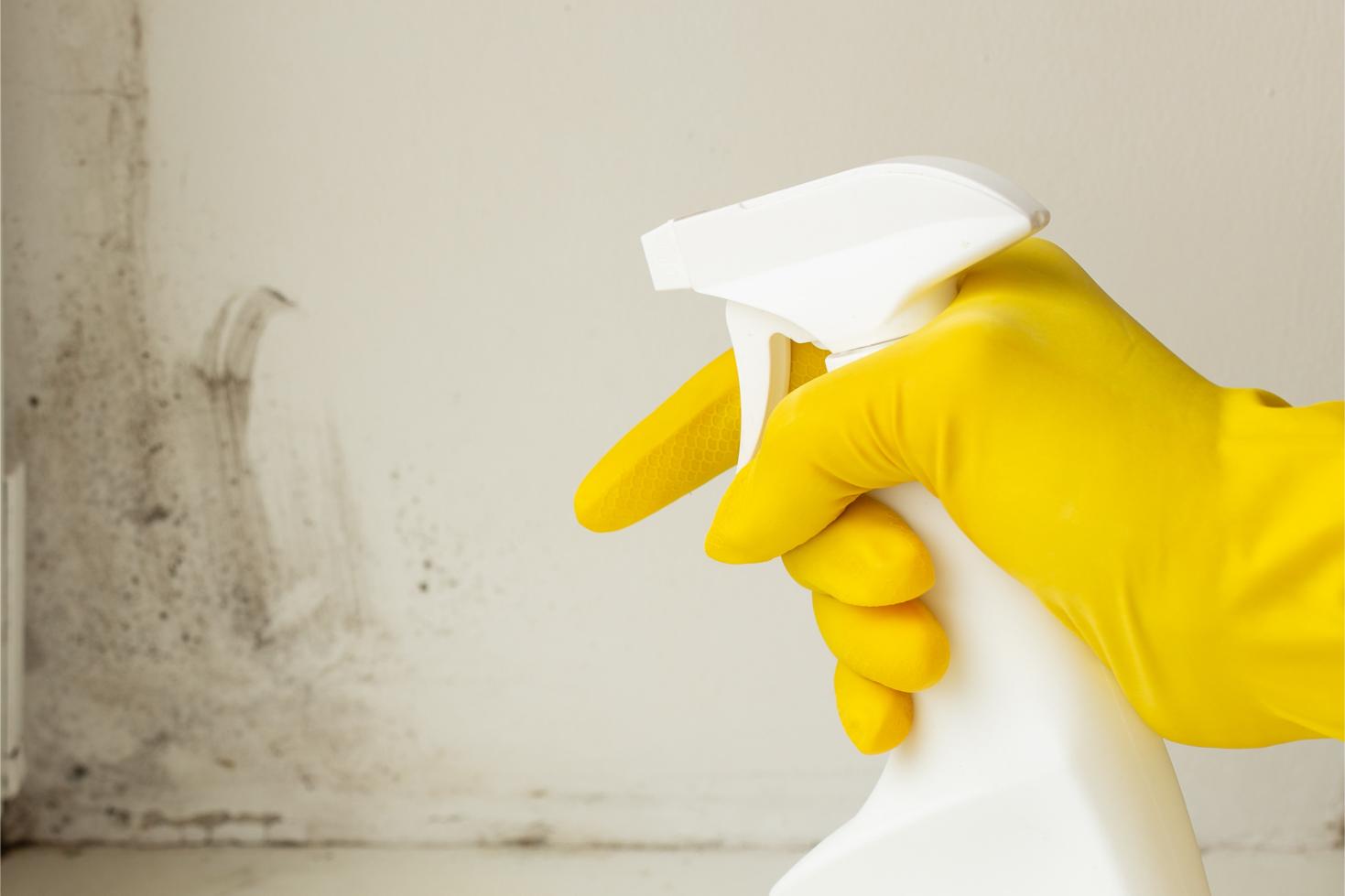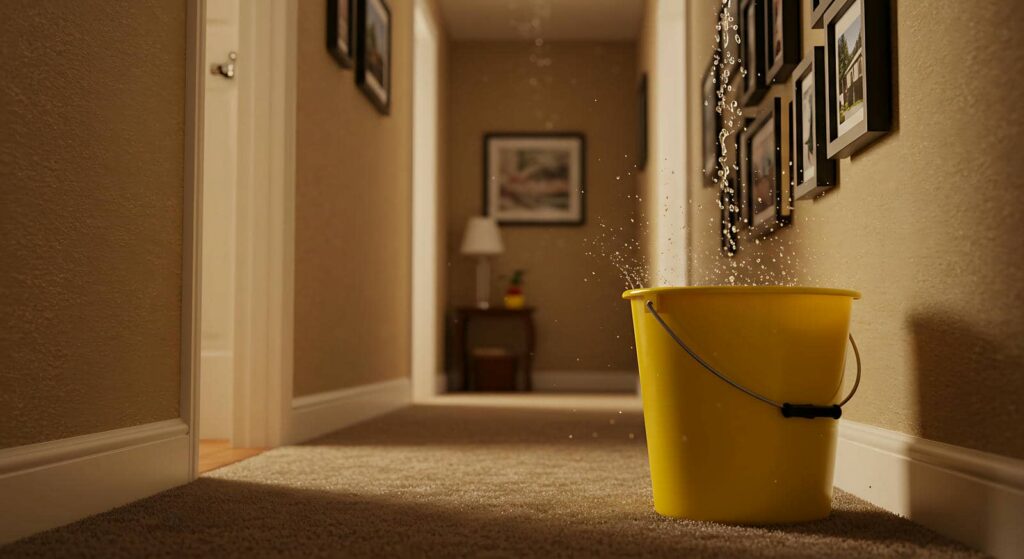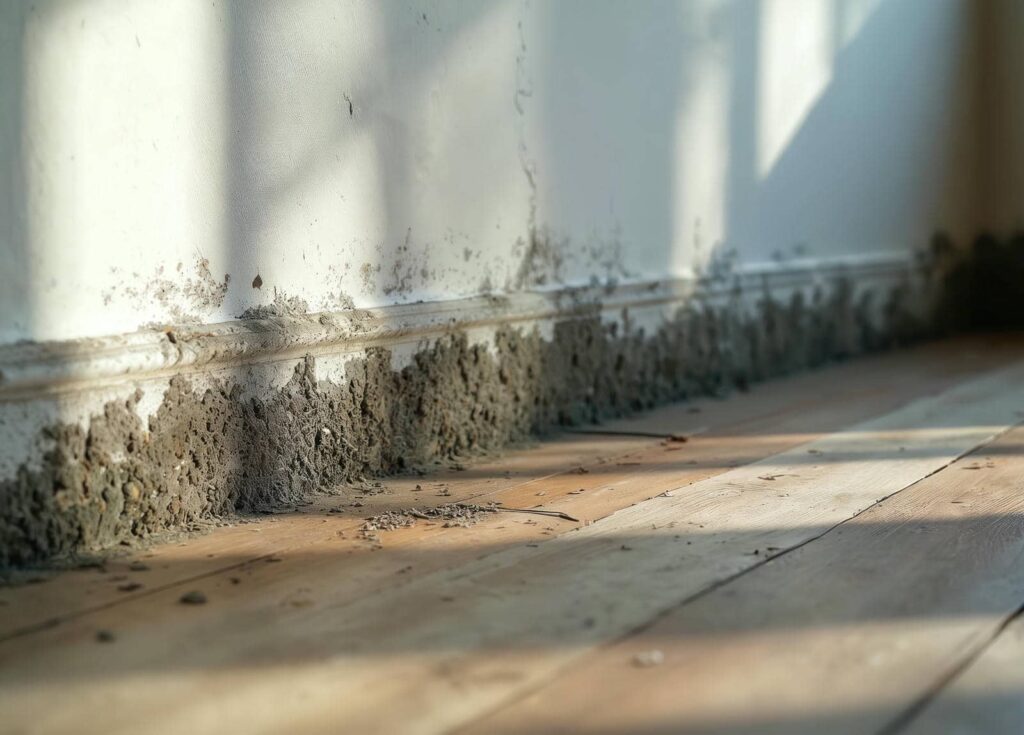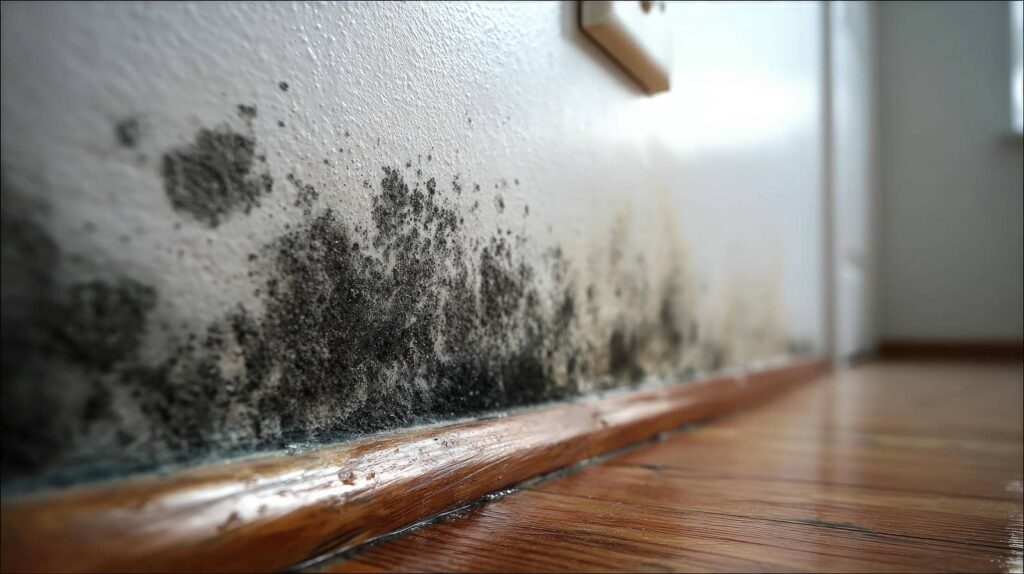Contents
When dealing with residential drywall mold remediation, ensuring a detailed assessment sets the foundation for effective mitigation. Each step plays an essential role in successfully tackling mold growth, from containment strategies to ventilation techniques. But what about the lesser-known tips that could make a significant difference in your remediation efforts? Stay tuned to discover the nuanced yet critical advice to elevate your mold remediation game and safeguard your home against future mold issues.
Assessing the Mold Damage
When evaluating the mold damage in your residential drywall, it’s essential to examine the extent of the infestation thoroughly. Start by visually inspecting the drywall for any visible signs of mold growth, such as black, green, or brown spots. Mold often thrives in damp, humid areas, so focus on spaces like bathrooms, basements, or areas near plumbing fixtures.
To assess the extent of the mold damage more accurately, consider using a moisture meter to detect any hidden water sources that may be promoting mold growth behind the drywall. Additionally, air quality testing can help identify if there are elevated mold spore levels in the indoor environment.
When examining the drywall, pay attention to any musty odors, as these can be indicative of mold growth, even if there are no visible signs. Remember that mold can spread quickly, so prompt action is vital to prevent further damage to your home and protect your family’s health.
If you find mold on your drywall, it’s crucial to address the issue promptly. Mold remediation experts can help determine the best course of action to remove the mold and prevent future growth safely. Remember, early detection and intervention are key to effectively restoring your residential drywall.
Containment Measures
To effectively contain mold during remediation, seal off the affected area using plastic barriers to prevent the spread of spores. This containment measure helps limit airflow contamination, ensuring that the mold doesn’t travel to other parts of the property.
Seal off the Affected Area
To effectively address mold in residential drywall, one essential step is to seal off the affected area using containment measures. By establishing a barrier, you prevent the spread of mold spores to unaffected areas, ensuring a more controlled remediation process. Here are some key containment measures to keep in mind:
| Containment Measures | Description | Benefits |
|---|---|---|
| Use plastic sheeting | Cover walls and floors with plastic to create a physical barrier. | Prevents mold spores from spreading to clean areas. |
| Tape off vents | Seal off vents with plastic and tape to avoid mold spores entering the HVAC system. | Maintains indoor air quality during remediation. |
| Close off doors | Keep doors closed or use plastic barriers to isolate the affected area. | Limits the spread of mold to other parts of the house. |
Implementing these containment measures is vital for a successful mold remediation process and helps contain the problem effectively.
Use Plastic Barriers
Employing plastic barriers is a critical strategy for containing and controlling the spread of mold during residential drywall remediation. Plastic barriers act as a physical blockade, preventing mold spores from dispersing to unaffected areas.
When setting up plastic barriers, make sure they’re tightly sealed to the floor, ceiling, and walls using tape or other appropriate materials. It’s important to create a fully enclosed work area around the affected drywall section. This containment measure helps in isolating the mold-infested zone, reducing the risk of cross-contamination.
When working within the contained area, minimize traffic in and out of the space to prevent mold spores from escaping. Plastic zipper doors should be installed at entry and exit points to facilitate movement while maintaining containment.
Regularly inspect the barriers for any damage or gaps, repairing them promptly to uphold the integrity of the containment zone. Remember, effective use of plastic barriers is key to successful mold remediation in residential drywall projects.
Limit Airflow Contamination
Minimizing airflow contamination is a vital aspect of mold remediation in residential drywall projects. When dealing with mold, it’s important to limit the spread of spores to unaffected areas. To achieve this, seal off the work area with plastic barriers, ensuring they’re securely taped to walls and ceilings.
Additionally, cover any vents or ducts with plastic sheeting and tape to prevent mold spores from circulating through the HVAC system.
Consider using an air scrubber equipped with HEPA filters to further contain airflow contamination. These devices help capture mold spores and other airborne particles, ensuring a cleaner and safer environment during the remediation process.
Remember to run the air scrubber continuously while work is being done and for a period afterward to capture any remaining contaminants.
Removal of Affected Drywall
When dealing with the removal of affected drywall during residential mold remediation, it’s crucial to approach this task with precision and care. Removing mold-infested drywall is vital to prevent further spread of mold spores and ensure a clean living environment. Here are some detailed steps to help you effectively remove affected drywall:
Preparation: Before starting the removal process, make sure you have proper protective gear such as gloves, goggles, and a mask to prevent exposure to mold spores. Seal off the affected area with plastic sheets to contain the mold during removal.
Cutting and Removal: Using a utility knife, carefully cut out the affected drywall at least 12 inches beyond the visible mold growth. Ensure to double-bag the removed drywall in heavy-duty plastic bags to prevent spreading mold spores.
Cleaning and Disposal: Thoroughly clean the area with a damp cloth and a mild detergent to remove any remaining mold spores. Dispose of all materials, including the protective gear, in sealed bags to prevent contamination.
Inspection: After removal, inspect the surrounding areas for any signs of mold growth. If mold is found, repeat the removal process in those areas.
Proper Ventilation Strategies
Understanding the significance of proper ventilation is vital to effectively addressing mold issues in your home. Consider investing in ventilation equipment such as exhaust fans, dehumidifiers, or air purifiers to enhance air circulation and reduce moisture levels.
Remember to regularly maintain and clean your ventilation systems to ensure peak performance and prevent mold growth.
Ventilation Importance
Proper ventilation is a critical aspect of residential drywall mold remediation. When addressing mold growth, ensuring adequate ventilation is crucial to preventing its spread and recurrence. Effective ventilation plays a vital role in reducing moisture levels in the air, which is crucial for inhibiting mold growth on drywall surfaces.
To improve ventilation, start by opening windows and doors to allow fresh air to circulate throughout the space. Additionally, utilizing fans or dehumidifiers can enhance airflow and reduce humidity levels, creating an environment less conducive to mold development.
Proper ventilation aids in mold remediation and promotes better indoor air quality, benefiting occupants’ overall health and comfort. By implementing these ventilation strategies, you can create an inhospitable environment for mold, safeguarding your home and ensuring a healthier living space for you and your family.
Ventilation Equipment Options
A key component in addressing mold growth on drywall surfaces is implementing effective ventilation strategies using suitable equipment. Proper ventilation equipment can aid in controlling moisture levels and enhancing indoor air quality. Here are some ventilation equipment options to ponder:
Dehumidifiers: These devices assist in reducing humidity levels in the air, preventing moisture buildup that fosters mold growth.
Air Purifiers: Air purifiers can aid in eliminating mold spores and other allergens from the air, enhancing overall air quality.
Exhaust Fans: Installing exhaust fans in areas prone to moisture, like bathrooms and kitchens, can assist in removing humid air and preventing mold formation.
Ventilation Systems: Whole-house ventilation systems ensure proper air circulation throughout the home, reducing the chances of mold growth in hidden corners.
Selecting the right ventilation equipment based on your specific needs and the extent of the mold issue is vital for effective mold remediation on drywall surfaces.
Ventilation Maintenance Tips
Implementing regular upkeep practices for your ventilation equipment is crucial in ensuring peak performance and longevity. By following these ventilation maintenance tips, you can sustain a healthy indoor atmosphere and effectively prevent mold growth.
Ventilation Maintenance Tips
Regularly cleaning and inspecting your ventilation system can have a significant impact on its efficiency and durability. Here are some essential maintenance tips to keep in mind:
| Maintenance Task | Frequency |
|---|---|
| Clean or replace air filters | Every 1-3 months |
| Inspect and clean ductwork | Annually |
| Check and clean exhaust fans | Bi-annually |
| Monitor humidity levels | Regularly |
| Schedule professional HVAC check-ups | Yearly |
Adhering to these upkeep practices can help ensure that your ventilation system operates at its best, reducing the risk of mold growth and improving indoor air quality. Remember, proper ventilation maintenance is crucial for a healthy home environment.
Cleaning and Disinfection Techniques
To effectively address mold growth on drywall in residential settings, it’s vital to employ efficient cleaning and disinfection techniques. Mold remediation on drywall requires attention to detail and thoroughness. Here are some key techniques to keep in mind:
Use a HEPA vacuum: Begin by vacuuming the affected area with a High-Efficiency Particulate Air (HEPA) vacuum to remove loose mold spores and debris. This helps prevent further spread of mold during the cleaning process.
Scrub with detergent: Prepare a solution of detergent and water, then use a stiff brush to scrub the mold off the drywall surface. Make sure to focus on the affected areas and scrub thoroughly to eliminate as much mold as possible.
Apply a disinfectant: After cleaning off the mold, use a disinfectant solution to kill any remaining mold spores. This step is essential to prevent regrowth and maintain a clean surface.
Dry thoroughly: Finally, allow the drywall to dry completely. Proper ventilation and dehumidification can help prevent moisture buildup, which is important for inhibiting future mold growth.
Preventive Measures for Future Growth
To minimize the risk of mold regrowth on residential drywall, proactive measures should be taken to create an environment that discourages mold development. Mold can be persistent, so it’s vital to implement preventive strategies to maintain a mold-free environment. Here are some key preventive measures you can take to inhibit future mold growth on drywall:
| Preventive Measure | Description |
|---|---|
| Control Indoor Humidity | Keep indoor humidity levels below 60% to prevent moisture buildup that fosters mold growth. |
| Improve Ventilation | Ensure proper ventilation in bathrooms, kitchens, and other high-moisture areas to reduce humidity. |
| Address Water Leaks Promptly | Rectify any leaks in plumbing, roofs, or windows immediately to prevent water from seeping into walls. |
| Use Mold-Resistant Products | Contemplate using mold-resistant drywall or paint in susceptible areas to deter mold growth. |
Seeking Professional Help
For effective remediation of mold on residential drywall, seeking professional assistance is essential. Mold infestations can be tricky to handle, and having experts by your side can ensure a thorough and safe removal process. Here are some reasons why professional help is important:
Expertise: Professionals have the knowledge and experience to identify the type of mold present, assess the extent of the damage, and determine the best remediation approach.
Specialized Equipment: Professional mold remediation companies have access to advanced tools and equipment that are necessary for effective mold removal and cleanup.
Safety: Mold remediation involves handling potentially harmful substances. Professionals are trained in proper safety protocols to protect themselves and others during the remediation process.
Prevention of Recurrence: Professionals remove the existing mold and address the underlying causes of mold growth, helping prevent future infestations.
Recap
Now that you have the top tips for residential drywall mold remediation, you are well-equipped to tackle the task with confidence. But wait, there’s one critical piece of advice you can’t afford to miss. Stay tuned for an exclusive bonus tip that will take your mold remediation efforts to the next level. Don’t miss out on this essential information that could make all the difference in your battle against mold on drywall. Stay tuned for more valuable insights!




